"Are we rising?"
"No, were sinking."
"For God's sake, throw something out!"
"There's nothing left to throw out..."
Two hours later, the balloon was less than four hundred feet above the pounding sea. Even the basket, which had held its five occupants, had been sacrificed. They clung perilously to the badly tattered net, which hung loosely over the wrinkled balloon.
Herbert, dangling on the right side of the balloon, was waving his free arm and shouting something that could barely be heard above the roar of the storm...
"Land! Land!"
THIS 1970 Bantam Pathfinder Edition is the first book edition of Jules Verne's The Mysterious Island that I read. As soon as I saw its great paperback cover while browsing in B. Dalton's I knew I had to have it. It's an abridged version by Lowell Bair--90,000 words reduced down from 195,000--but that didn't really matter much to me. Prior to this I had only read the comic book adaptations so this was in actuality a major step up. A few months later I came across Allan W. Eckert's The Frontiersmen,
guessing that its great cover was painted by the same artist, and it was, but
it was thirty years later before I determined who exactly that person was.
Please note the signature in the lower right corner. Even with magnification it is near impossible to read. I even looked around for other Bantam covers that were similar to this and The Frontiersmen, but I didn't find any. Turns out I didn't look hard enough, because they were there all along.
Kenneth Pauling Riley (1919-2015) was the artist in question and in fact he produced several paperback covers in the late 1960's and early 1970's for Bantam, including the sequel to Eckert's historical novel, Wilderness War. Riley actually started working for Bantam as far back as the 1940's. His most notable covers for them were C. S. Forester's The African Queen and Ernest Hemingway's The Sun Also Rises, both published in 1949. His style was slightly different in those days, more in keeping with what the publishing world was currently trending. By the time he did The Mysterious Island his style was perfectly suited for what he would finish out his career doing, producing significant Fine Art Western paintings.
* * * * * * *
 |
| CLICK TO ENLARGE |
THE MYSTERIOUS ISLAND (1874; French title: L'ile Mystérieuse; hereafter referred to as TMI, no pun intended) is an epic, desert-island adventure story in three parts that was written by French novelist, poet and playwright Jules Gabriel Verne (1828-1905). It is a sequel of sorts to his Twenty Thousand Leagues Under the Sea, which was published a few years earlier in 1870.
The thought is that Hetzel discovered Monsieur Verne, or 'made' Verne, but it could just as well be the other way around. They both certainly benefited from each other, one becoming a highly successful book publisher, the other an internationally famous author.
Part I: Dropped from the Clouds.
Part II: Abandoned.
Part III: The Secret of the Island.
Scribner editions, Part 1, Part II, & Part III, circa 1875. The decorated, embossed cloth cover illustrations are derived from selected interior illustrations by Ferat.
BELOW are three illustrations by Jules Ferat, randomly selected from later editions with corresponding text from the Kingston translation:
[Kingston trans.] 'The ladder was finally fixed on the 28th of May. There were not less than a hundred rounds in this perpendicular height of eighty feet. Harding had been able, fortunately, to divide it in two parts, profiting by an overhanging of the cliff which made a projection forty feet above the ground. This projection, carefully leveled by the pickaxe, made a sort of platform, to which they fixed the first ladder, of which the oscillation was thus diminished one-half, and a rope permitted it to be raised to the level of Granite House. As to the second ladder, it was secured both at its lower part, which rested on the projection, and at its upper end, which was fastened to the door. In short the ascent had been made much easier.'
[Kingston trans.] 'Herbert had stationed in the bows that he might indicated the course to be followed among the channels, when all at once he shouted,-- "Luff, Pencroft, luff!" [luff means the act of sailing a ship nearer the wind] "What's the matter," replied the sailor; "a rock?" "No--wait," said Herbert; "I don't quite see. Luff again--right--now." So saying, Herbert leaning over the side, plunged his arm into the water and pulled it out, exclaiming,-- "A bottle!" He held in his hand a corked bottle which he had just seized a few cables' length from the shore. Cyrus Harding took the bottle. Without uttering a single word he drew the cork, and took from it a damp paper, on which were written these words:-- 'Castaway... Tabor Island: 153 W. long., 37 II' S. lat.'
[Kingston trans.] 'Herbert was there face to face with a fierce jaguar, similar to the one which had been killed on Reptile End. Suddenly surprised, Herbert was standing with his back against a tree, while the animal gathering itself together was about to spring.
But the stranger, with no other weapon than a knife, rushed on the formidable animal, who turned to meet this new adversary.
The struggle was short. The stranger possessed immense strength and activity. He seized the jaguar's throat with one powerful hand, holding it as a vise, without heeding the beast's claws which tore his flesh, and with the other he plunged his knife into its heart.'
Professor Stump tried to make his translation as faithful as possible to Verne and it couldn't have been an easy project. In Stump's own words fidelity is a complicated thing. One fundamental difference between this new translation and the old is the proper use of names; under Stump Cyrus Harding became Cyrus Smith, as Verne intended, Pencroft is now Pencroff, Herbert is Harbert, and so on. Jupiter, the colonists pet ape, is Joop with a long u instead of just Jup, generally pronounced with a short u. Of course they are merely minor changes from the Kingston but certainly relevant to some extent. Verne had his share of slips and errors too (though his science tended to be as solid and thorough as it could be), and Stump valiantly fixed most of them when it was appropriate to do so.
Here's what KIRKUS REVIEWS had to say about his effort:
"The first of two new unabridged
translations of what Roland Barthes called Verne’s “almost perfect”
novel, currently only available in its 19th-century incarnation. In
1865, a year before he invented the “scientific romance,” Verne’s
castaway novel, UNCLE ROBINSON, was rejected by his publisher. Ten years later, Verne, now renowned for AROUND THE WORLD IN EIGHTY DAYS and FROM THE EARTH TO THE MOON, vastly expanded his castaway story as THE MYSTERIOUS ISLAND-- a
tale based on real-life Alexander Selkirk (1676–1721), a sailor who
joined the South Sea buccaneers and, at his own request, was put ashore
on an island in the Pacific off the coast of Chile (in 1704), where he
survived alone until 1709, when he was discovered and brought back to
Britain. Verne’s own story is a rousing summation of his optimistic
expectation that, through the thoughtful uses of technology and the aid
of good fellowship and a friendly dog, the human race could survive just
about anything. When five Americans—an engineer, a journalist, a
sailor, a freed African slave, a young boy and his faithful dog—find
themselves stranded in Richmond, Virginia, during the closing days of
the Civil War, they steal a balloon and drift into a storm that blows
them thousands of miles westward, until the balloon falls apart near a
volcanic island in the South Pacific. Though it takes a hundred pages
for the group to reunite, another hundred and thirty to guess that they
may not be alone, a few hundred more for them to be attacked by pirates
and find the attack mysteriously repulsed (by the author’s most famous
and enigmatic fictional villain [Captain Nemo], now tragically dying), Verne’s plot
moves along breathlessly through scenes of the castaways surmounting
danger through technology (e.g., a watch crystal focusing the sun’s rays
to make fire) while having chatty lectures about flora and fauna.
Wide-eyed mid--19th-century
humanistic optimism in a breezy, blissfully readable translation by
Stump."
I don't think I could have summarized or critiqued TMI and Stump's work any better than Kirkus just did, although I might have emphasized more of the castaway's incredible technological creativity, mentioning perhaps the absurd making of nitroglycerine and their application of it to re-shape a lake, something that ironically goes against everything I believe in as an environmentalist (of course, thankfully, I'm not trying to survive on a desert island, ha ha).
"Jordan Stump's new translation of THE MYSTERIOUS ISLAND makes the book new, even---or perhaps I should say especially---to anyone who spent his or her childhood reading and re-reading the English text [Kingston] that was standard for so many generations.
... It is to be hoped that Mr. Stump's considerable efforts will be enough to call THE MYSTERIOUS ISLAND to the attention of the Survivor generation; for when the "unseen hand" on the island is that of Captain Nemo rather than a television network, a world of truly ageless adventure, amusement, and yes, mystery await." --- Caleb Carr, from the Introduction.
At last, two minutes later, it reapproached obliquely, and finally fell on a sandy beach, out of the reach of the waves.
The voyagers, aiding each other managed to disengage themselves from the meshes of the net. The balloon, relieved from their weight, was taken by the wind, and like a wounded bird which revives for an instant, disappeared into space.'
[Stump trans.]: 'It was only two cables from land when four terrible cries burst from four breasts at once. Just when it had begun to seem certain that the balloon would never rise again, a huge wave had washed over it, and it had taken an unexpected leap upward. As if suddenly freed of a part of its burden, it climbed to an altitude of fifteen hundred feet; there it encountered a sort of eddying wind, which, rather than carrying it directly toward the coastline, drove it along almost parallel to shore. Finally, two minutes later, it obliquely approached the land, and at last came to rest on the sands of the shoreline beyond the reach of the waves.
Each helping the next, the passengers extricated themselves from the ropes of the net. Freed of their weight, the balloon was caught up by the wind, and, just as an injured bird sometimes briefly comes back to life, it disappeared into the heavens.'
[Kingston trans.]: 'It was not a lamantin, but one of that species of the order of cetaceans, which bear the name of the "dugong," for its nostrils were open at the upper part of the snout. The enormous animal rushed on the dog, who tried to escape by returning towards the shore. His master could do nothing to save him, and before Gideon Spilett or Herbert thought of bending their bows, Top, seized by the dugong, had disappeared beneath the water.
Neb his iron-tipped spear in his hand, wished to go to Top's help, and attack the dangerous animal in its own element.
Meanwhile a struggle was going on beneath the water, an inexplicable struggle, for in his situation Top could not possibly resist; and judging by the bubbling of the surface it must be also a terrible struggle, and could not but terminate in the death of the dog! But suddenly, in the middle of a foaming circle, Top reappeared. Thrown in the air by some unknown power, he rose ten feet above the surface of the lake, fell again into the midst of the agitated waters, and then soon gained the shore, without any severe wounds, miraculously saved.'
[Stump trans.} 'It was in fact not a manatee, but what is known as a "dugong"---a member of the Cetacean order, distinguishable from the manatee by the open nostrils at the top of its muzzle.
The enormous animal launched itself toward the dog, who tried in vain to escape and return to shore. His master could do nothing to save him, and before Gideon Spilett or Harbert could think of arming their bows, the powerful dugong had dragged Top into the water's depths.
His iron pike at the ready, Neb was about to dive into the lake and attack the formidable beast in its own element, in hopes of rescuing the dog.
"No, Neb," said the engineer, restraining his courageous servant.
Meanwhile a struggle was going on beneath the water; an inexplicable struggle, for in these conditions Top clearly could not last long; a fierce and furious struggle, it seemed, judging by the churning of the water's surface; a struggle, finally, that could not fail to end in the dog's death! But now Top abruptly reappeared in a nimbus of foam. Launched into the air by some unknown force, he shot up to a height of ten feet above the surface of the lake, then fell into the water again with a great splash, and soon returned to shore none the worse for wear, miraculously spared what had seemed an inevitable death.'
[Kingston trans.]: 'The settlers descended very slowly. They could not but feel a certain awe, in thus venturing into these unknown depths, for the first time visited by human beings. They did not speak, but they thought; and the thought came to more than one, that some polypus or other gigantic cephalopod might inhabit the interior cavities, which were in communication with the sea. However, Top kept at the head of the little band, and they could rely on the sagacity of the dog, who would not fail to give the alarm if there was any need for it.'
[Stump trans.]: 'The colonists descended at a very cautions pace. An intense emotion took hold of them as they ventured farther into the mass of rock, realizing that they were very obviously the first humans ever to have set foot here. They did not speak, but their minds were full of thoughts, and more than one of them must have been thinking that some octopus or other giant cephalopod might well still be lurking in these inner cavities, which led directly to the sea. Great vigilance would thus be required.
But at the same time, Top was at the head of the little group, and they knew they could rely on the dog's sagacity. He would not fail to sound the alarm should the need arise.'
[Kingston trans.]: 'On the 7th of September, Cyrus Harding, having observed the crater, saw smoke curling round the summit of the mountain, its first vapors rising in the air.
The colonists, warned by the engineer, left their work and gazed in silence at the summit of Mount Franklin.
The volcano had awoke, and the vapor had penetrated the mineral layer heaped up at the bottom of the crater. But would the subterranean fires provoke any violent eruption? This was an event which could not be foreseen. However, even while admitting the possibility of an eruption, it was not probable that the whole of Lincoln Island would suffer from it. The flow of volcanic matter is not always disastrous, and the island had already undergone this trial, as was shown by the streams of lave hardened on the northern slopes of the mountain. Besides, from the shape of the crater---the opening broken in the upper edge---the matter would be thrown to the side opposite the fertile regions of the island.'
[Stump trans.]: 'On September 7th, gazing at the summit of Mount Franklin, Cyrus Smith saw a vaporous plume writhing over the crater, as jets of steam shot high into the air.
Alerted by the engineer, the colonists paused in their labors and silently contemplated the summit of Mount Franklin.
The volcano had thus reawakened, and the gases had broken through the pile of mineral rubble at the bottom of the crater. But did this mean that a violent eruption was at hand? That they could not say.
Nevertheless, even if the volcano should erupt, the consequences for Lincoln Island as a whole were unlikely to be serious. An outpouring of magma is not always a catastrophe. The island had undergone such tribulations many times before, as the streaks of hardened lava on the mountain's northern slope clearly showed. Furthermore, thanks to the deep gash in the crater's upper rim, any material thrown from the volcano would be directed away from the fertile areas of the island.'
This was in fact the exact shape of the island, which it is of consequence to know, and a tolerably correct map of it was immediately drawn by the reporter.'
Here, then, is the exact configuration of the island, which it will be important to understand, and which the reporter immediately mapped out as accurately as he could.'
Newell Convers Wyeth (1882-1945) produced more than 3000 paintings and illustrated 112 books during his celebrated career, including 25 Scribner Classics, of which TMI was a part of. The Scribner's ranged from The Black Arrow to The Deerslayer to Kidnapped to Robinson Crusoe to The Yearling. When I was a child I was not very impressed by Wyeth's artwork in these books. It was always too melodramatic and dated for my tastes, but as I got older and wiser I began to appreciate Wyeth more and more, even to the point of being astonished at his work on Treasure Island, which some folks consider his finest single illustrative achievement. When, as an adult, I finally saw my first actual Wyeth painting in a museum I was completely blown away. For one thing the colors were bolder than its book reproduction, and there was a special, almost intangible quality about it that made it stand out even among the other fine paintings it shared space with. The lesson learned for this humble host, don't fully judge an illustration until you've seen its original with the naked eye.
The sea indeed formed an immense circular sheet of water all around them! ... No land in sight, Not a sail... Was the island inhabited?
The castaways had landed from a balloon on an island in the Pacific, on which they would have to live and support themselves. From here the fertile imagination of Jules Verne goes on to create situation after situation. There is the mysterious passage, which leads to a vast and magnificent cavern which the settlers call Granite House and in which they live. The ways in which they produce necessities for themselves are truly ingenious---and always there are strange happenings leading the reader on and on.'
 |
| ENDPAGES - CLICK TO ENLARGE |
'... Gideon Spilett and his companions stripped themselves of their clothes, which they placed in bundles on their heads, and then ventured into the water, which was not more than five feet deep. Herbert, for whom it was too deep, swam like a fish, and got through capitally. All three arrived without difficulty on the opposite shore.'
"Well! we are preciously stupid!"
"Why?" asked Gideon Spilett, who had closed his notebook and risen to depart.
"Why! our island! we have forgotten to christen it it!"
Herbert was going to propose to give it the engineer's name and all his companions would have applauded him, when Cyrus Harding said simply,--
"Let us give it the name of a great citizen, my friends; of him who now struggles to defend the unity of the American Republic! Let us call it Lincoln Island!"
THE CAPTURE OF THE ORANG: 'Nevertheless, they threw themselves on the orang, who defended himself gallantly, but was soon overpowered and bound.'
'Thus the colony was increased by a new member. As to his name the sailor begged that in memory of another ape which he had known, he might be called Jupiter, and Jup for short. And so, without more ceremony, Master Jup was installed in Granite House.'
RELEASING THE ALBATROSS: 'Gideon Spilett then wrote out a concise account, which was placed in a strong waterproof bag, with an earnest request to whoever might find it to forward it to he office of the New York Herald. This little bag was fastened to the neck of the albatross, and not to its foot, for these birds are in the habit of resting on the surface of the sea; then liberty was given to this swift courier of the air, and it was not without some emotion that the colonists watched it disappear in the misty west.
"Where is he going to?" asked Pencroft.
"Towards New Zealand," replied Herbert.
"A good voyage to you," shouted the sailor, who himself did not expect any great result from this mode of correspondence.'
CAPTAIN HARDING SLAYS A CONVICT: 'In a few seconds, before he had even time to fire his second barrel, he fell, struck to the heart by Harding's dagger, more sure even than his gun.'
CAPTAIN NEMO: 'At these words the reclining figure rose, and the electric light fell upon his countenance.'
* * * * * * *
"One of the most distinguished was Captain Cyrus Harding. He was a native of Massachusetts, a first-class engineer, to whom the government had confided, during the war, the direction of the railways, which were so important at that time. A true Northerner, thin, bony, lean, about forty-five years of age; his closecut hair and his beard, of which he only kept a thick mustache, were already getting gray. He had one of those finely-developed heads which appear made to be struck on a medal, piercing eyes, a serious mouth, the physiognomy of a clever man of the military school.
"About half-past six, three-quarters of an hour after sunrise, the mist became more transparent. It grew thicker above, but cleared away below. Soon the isle appeared as if it had descended from a cloud, then the sea showed itself around them, spreading far away towards the east, but bounded on the west by an abrupt and precipitous coast. Yes! the land was there."
"As to the birds, they swarmed among the scanty branches of the eucalypti and casuarinas, which did not hinder the display of their wings. Black, white, or gray cockatoos, paroquets, with plumage of all colors, kingfishers of a sparkling green and crowned with red, blue lories, and various other birds appeared on all sides, as through a prism, fluttering about and producing a deafening clamor."
"If Cyrus Harding was not mistaken in his calculation, the island had almost the extent of Malta or Zante, in the Mediterranean, but it was at the same time much more irregular and less rich in capes, promontories, point, bays or creeks. Its strange form caught the eye, and when Gideon Spilett, on the engineer's advice, had drawn the outline, they found that it resembled some fantastic animal, a monstrous leviathan, which lay sleeping on the surface of the Pacific.
This was in fact the exact shape of the island, which it is of consequence to know, and a tolerably correct map of it was immediately drawn by the reporter."
"The reporter, Herbert, and Pencroft in this manner frequently disembarked, sometimes on the right bank, sometimes on the left bank of the Mercy.
The latter was less abrupt, but the former more wooded. The engineer ascertained by consulting his pocket compass that the direction of the river from the first turn was obviously southwest and northeast, and nearly straight for a length of about three miles. But it was to be supposed that this direction changed beyond that point, and that the Mercy continued to the northwest towards the spurs of Mount Franklin, among which the river rose."
"...the fishing, either in the lake or the Mercy, was very profitable, for Pencroft had made some lines, armed with iron hooks, with which they frequently caught fine trout, and a species of fish whose silver sides were speckled with yellow, and which were also extremely savory."
"They did well to hasten, for at a turn of the path near a clearing they saw the lad thrown on the ground and in the grasp of a savage being, apparently a gigantic ape, who was about to do him some great harm."
"The reporter then thought that perhaps the sight of the fire would have some effect on him, and in a moment one of those beautiful flames, that attract even animals, blazed up on the hearth. The sight of the flame seemed at firs to fix the attention of the unhappy object, but soon he turned away and the look of intelligence faded."
"The 'Bonaventure' sailed along this coast for the distance of half a mile. It was easy to see that it was composed of blocks of all sizes, from twenty to three hundred feet in height, and of all shapes, round like towers, prismatic like steeples, pyramidal like obelisks, conical like factory chimneys. An iceberg of the Polar seas could not have been more capricious in its terrible sublimity! Here, bridges were thrown from one rock to another; there, arches like those of a wave, into the depths of which the eye could not penetrate; in one place, large vaulted excavations presented a monumental aspect; in another, a crowd of columns, spires, and arches, such as no Gothic cathedral ever possessed. Every caprice of nature, still more varied than those of the imagination, appeared on this grand coast, which extended over a length of eight or nine miles."
"... the reporter following him prudently when, all at once, the dog rushed toward a thick bush, and drew out a rag. It was a piece of cloth, stained and torn, which Spilett immediately brought back to the corral. There it was examined by the colonists, who found that it was a fragment of Ayrton's waistcoat, a piece of that felt, manufactured solely by the Granite House factory."
"The colonists even visited dark tunnels, dating from the volcanic period, still black from the passage of the fire, and penetrated into the depths of the mountain. They traversed these somber galleries, waving lighted torches; they examined the smallest excavations; they sounded the shallowest depths, but all was dark and silent. It did not appear that the foot of man had ever before trodden these ancient passages, or that his arm had ever displaced one of these blocks, which remained as the volcano had cast them up above the waters, at the time of the submersion of the island."
"All regarded him with profound emotion. Before them they beheld that being whom they had styled the "genius of the island," the powerful protector whose intervention, in so many circumstances, had been so efficacious, the benefactor to whom they owed such a debt of gratitude!"
FRONTIS (depicting the balloon rising over Richmond, VA): "At that moment a dog sprang with a bound into the car. It was Top, a favorite of the engineer. The faithful creature, having broken his chain, had followed his master. He, however, fearing that its additional weight might impeded their ascent, wished to send away the animal.
"One more will make but little difference, poor beast!" exclaimed Pencroft, heaving out two bags of sand, and as he spoke letting go the cable; the balloon ascending in an oblique direction, disappeared, after having dashed the car against two chimneys, which it threw down as it swept by them.
Then indeed, the full rage of the hurricane was exhibited to the voyagers."
"Taking a small, rough stone, he wiped it carefully, and with a beating heart, holding his breath, he gently rubbed the match. The first attempt did not produce any effect. Pencroft had not struck hard enough, fearing to rub off the phosphorus.
"No, I can't do it," said he, "my hand trembles, the match has missed fire; I cannot, I will not!" and rising, he told Herbert to take his place.
Certainly the boy had never in all his life been so nervous. Prometheus going to steal the fire from heaven could not have been more anxious. He did not hesitate, however, but struck the match directly.
A little spluttering was heard and a tiny blue flame sprang up, making a choking smoke. Herbert quickly turned the match so as to augment the flame, and then slipped it into the paper cone, which in a few seconds too caught fire, and then the moss.
A minute later the dry wood crackled and a cheerful flame, assisted by the vigorous blowing of the sailor, sprang up in the midst of the darkness."
"At half-past five the little band arrived at the precipice, and a short time after at the Chimneys. They stopped, and the litter was placed on the sand; Cyrus Harding was sleeping profoundly, and did not awake."
"Kangaroos!" cried Herbert.
"Are they good to eat?" asked Pencroft.
"Stewed," replied the reporter, "their flesh is equal to the best venison!--"
"There the passage ended in a vast and magnificent cavern. Top was running backwards and forwards, barking furiously. Pencroft and Neb, waving their torches, threw the light into every crevice; and and at the same time, Harding, Gideon Spilett, and Herbert, their spears raised, were ready for any emergency which might arise."
"Gideon Spilett then wrote out a concise account, which was placed in a strong waterproof bag, with an earnest request to whoever might find it to forward it to he office of the New York Herald. This little bag was fastened to the neck of the albatross, and not to its foot, for these birds are in the habit of resting on the surface of the sea; then liberty was given to this swift courier of the air, and it was not without some emotion that the colonists watched it disappear in the misty west."
"At this time Gideon Spilett, aided by Herbert Took several views of the most picturesque parts of the island, by means of the photographic apparatus found in the cases, and of which they had not as yet made any use.
This apparatus, provided with a powerful object-glass, was very complete. Substances necessary for the photographic reproduction, collodion for preparing the glass plate, nitrate of silver to render it sensitive, hyposulphate of soda to fix the prints obtained, chloride of ammonium in which to soak the paper destined to give the positive proof, acetate of soda and chloride of gold in which to immerse the paper, nothing was wanting. Even the papers were there, all prepared, and before laying in the printing-frame upon the negatives, it was sufficient to soak them for a few minutes in the solution of nitrate of silver.
The reporter and his assistant became in a short time very skillful operators, and they obtained fine views of the country, such as the island, taken from Prospect Heights with Mount Franklin in the distance, the mouth of the Mercy, so picturesquely framed in high rocks, the glade and the corral, with the spurs of the mountain in the background, the curious development of Claw Cape, Flotsam Point, etc.
Nor did the photographers forget to take the portraits of all the inhabitants of the island, leaving out no one."
"That is all very well," then said the reporter, "but I must point out to Pencroft that his harbor is wanting in one very important respect!"
"And what is that, Mr. Spilett?"
"An opening, a cutting of some sort, to give access to the interior of the island. I don not see a spot on which we could land."
And, in fact, the steep lava cliffs did not afford a single place suitable for landing. They formed an insuperable barrier, recalling, but with more wildness, the fiords of Norway. The "Bonaventure," coasting as close as possible along the cliffs, did not discover even a projection which would allow the passengers to leave the deck."
"It is not the American flag," said Pencroft from time to time, "nor the English, the red of which could be easily seen, nor the French or German colors, nor the white flaag of Russia, nor the yellow of spain. One would say it was all one color. Let's see: in these seas, what do we generally meet with? The Chilean flag?--but that is tri-color. Brazilian?--it is green. Japaneses?--it is yellow and black, while this--"
At that moment the breeze blew out the unknown flag. Ayrton, seizing the telescope which the sailor had put down, put it to his eye, and in a hoarse voice,--
"The black flag!" he exclaimed."
"... Towards the end of the month of September the skeleton of the vessel, which was to be rigged as a schooner, lay in the dockyard. The ribs were almost entirely completed, and, all the timbers having been sustained by a provisional band, the shape of the vessel could already be seen. The schooner, sharp in the bows, very slender in the after-part, would evidently be suitable for a long voyage, if wanted; but laying the planking would still take a considerable time. Very fortunately, the iron work of the pirate brig had been saved after the explosion. From the planks and injured ribs Pencroft and Ayrton had extracted the bolts and a large quantity of copper nails. It was so much work saved for the smiths, but the carpenters had much to do."
"At this place the breadth of the sheet of water measured nearly 350 feet, and beyond the dazzling center could be seen an enormous basaltic wall, blocking up any issue on that side. The cavern widened here considerably, the sea forming a little lake. But the roof, the side walls, the end cliff, all the prisms, all the peaks, were flooded with the electric fluid, so that the brilliancy belonged to them, and as if the light issued from them.
In the center of the lake a long cigar-shaped object floated on the surface of the water, silent, motionless. The brilliancy which issued from it escaped from its sides as from two kilns heated to a white heat. This apparatus, similar in shape to an enormous whale, was about 250 feet long, and rose about ten or twelve above the water."
"Cyrus Harding and his companions had drawn near the divan, and now arranged the cushions in such a manner as to better support the dying man.
They saw his eyes wander over all the marvels of this saloon, lighted by the electric rays which fell from the arabesques of the luminous ceiling. He surveyed, one after the other, the pictures hanging from the splendid tapestries of the partitions, the chef-d'oeuvres of the Italian, Flemish, French,m and Spanish masters; the statues of marble and bronze on their pedestals; the magnificent organ, leaning against the after-partition; the aquarium, in which bloomed the most wonderful productions of the sea-- marine plants, zoophytes, chaplets of pearls of inestimable value; and, finally, his eyes rested on this device, inscribed over the pediment of the museum-- the motto of the "Nautilus"--- "Mobilis in mobile."
 |
| CLICK TO ENLARGE |
"The nub of Verne's story is that nature is kind; that the Earth supplies us with what we need, and that if we are wise and careful, we can live happily. It also teaches that the source of unhappiness is human. Animals might be dangerous, but not malevolently so; the can be dealt with. A natural disaster such as a hurricane or a volcano can be unimaginably destructive but there is no malevolence there, either. No, it is when humanity intrudes---the pirate ship and the convicts upon it---that malevolence and deliberate evil enter. And we cheer their destruction so that our heroes can be left to themselves and to constructive happiness again." --- Isaac Asimov, from the Afterword.
A few the TMI editions I learned about on that website I've added as bonus covers below:
'This story tells of the mysterious island upon which the castaways were "Dropped from the clouds," and also of a neighbouring island that proved even more of a mystery. On this second island they find "The Abandoned,"---a man with a strange history which is here related.'
 |
| CLICK TO ENLARGE |
The "Soon To Be A Major Film" in question is the 1973 Spanish-language Italian-Spanish-French-Cameroonian adventure film of the same name, starring Omar Sharif as Captain Nemo, Gerard Tichy as Cyrus Smith (Harding), Philippe Nicaud as Gedeon Spilett, Ambroise Bia as Nab, Jess Hahn as Pencroff, Rafael Bardem Jr., as Harbert Brown, and Gabriele Tinti as Ayrton. Apparently, this film was recut from a TV series of the same year, neither of which I've seen more than snippets of. The film is supposed to be fairly faithful to the original book and it has an awesome looking Nautilus (on the outside anyway), but I don't believe it's a film that garnered much if any praise. Roger Ebert in particular gave it one and half stars and called it "nihilistic and lacking any decent effects."
'The exciting sequel to "20,000 Leagues Under The Sea." The balloon was sinking and there was nothing left to throw out. The storm rose, threatening to engulf them. Only four hundred feet above the pounding sea the five occupants clung to the badly tattered net which hung over the wrinkled balloon. Suddenly one of them waved his free arm and shouted something which could barely be heard above the storm... "Land! Land!"
Gerald "Gerry" McCann (1916-1995) studied at the Pratt Institute in Brooklyn and the Art Students League in NY before embarking on a career as a pulp and magazine and comic illustrator. He worked for several comic book publishers, including Charlton, DC, Dell, and Classics Illustrated, for which he also painted covers. He also produced cover art and illustrations for dozens of young adult books, in addition to quite a few historical novels and mysteries for adults. McCann eventually wound up in Connecticut, a member of the art community surrounding Harold Von Schmidt and the Famous Artists School in Westport, CT, where he became a valued instructor. It was there I believe that he began to produce fine art Western paintings, which are well regarded today by collectors.












.a.jpg)



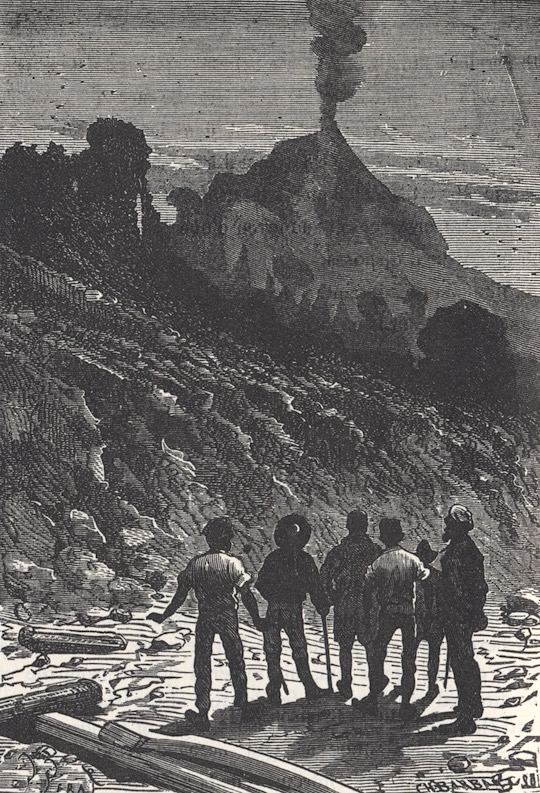

















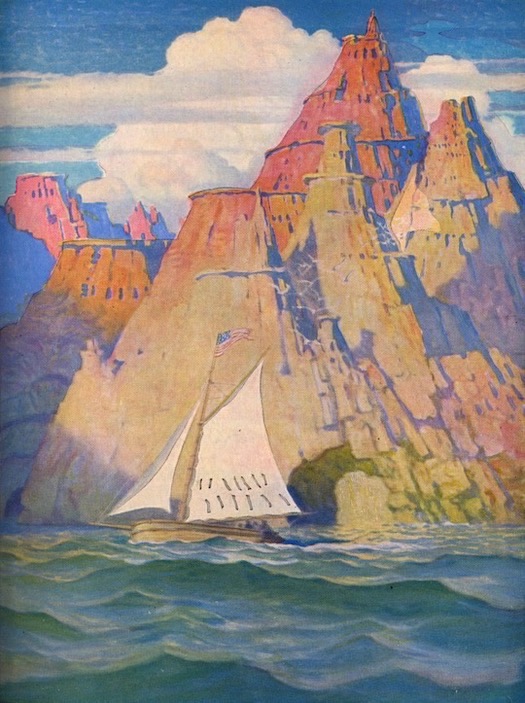






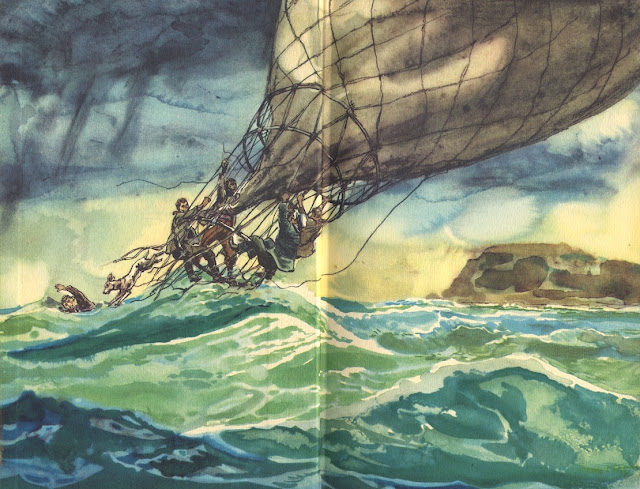
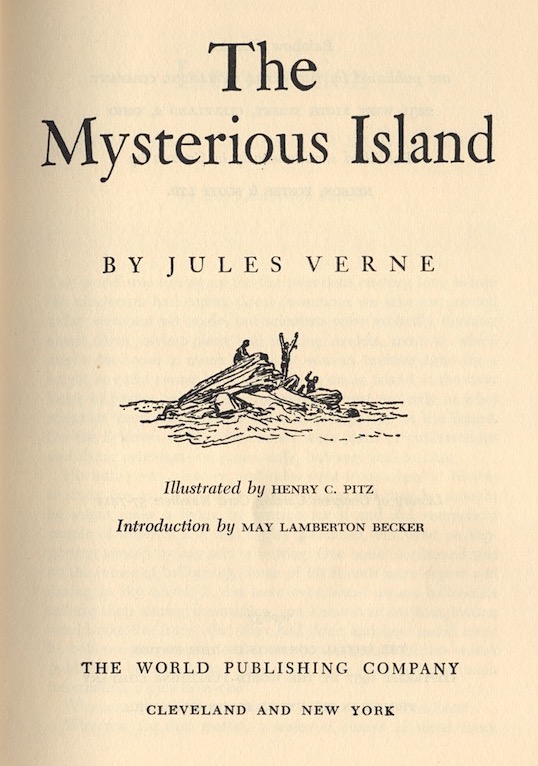

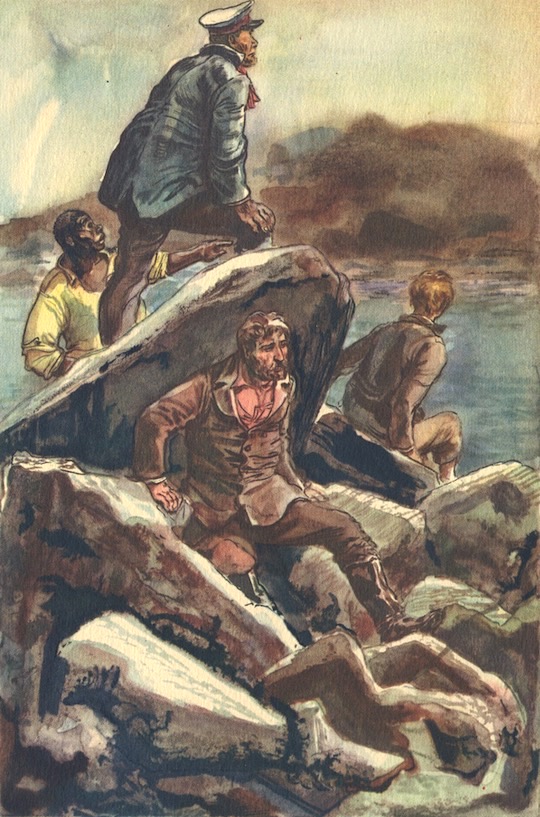












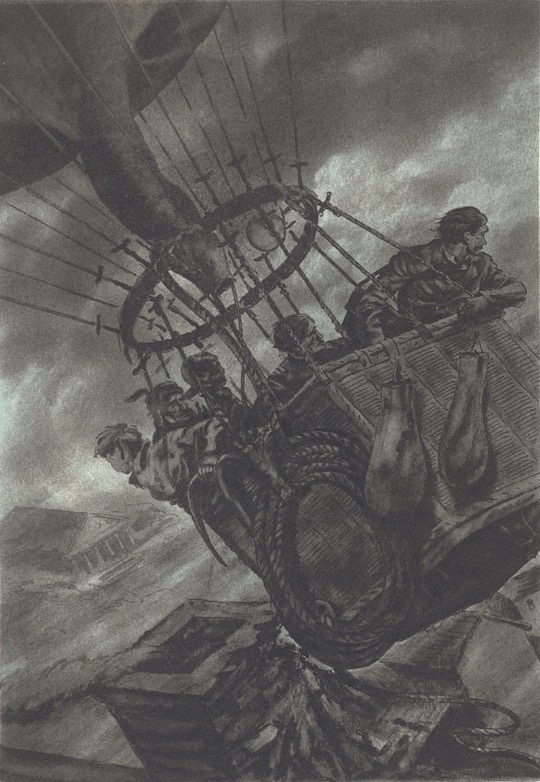



















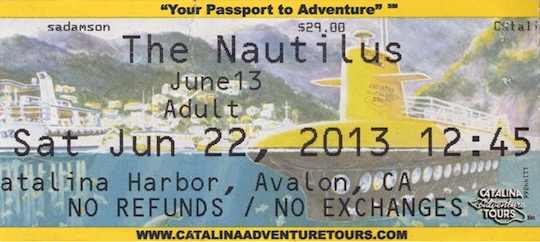
No comments:
Post a Comment